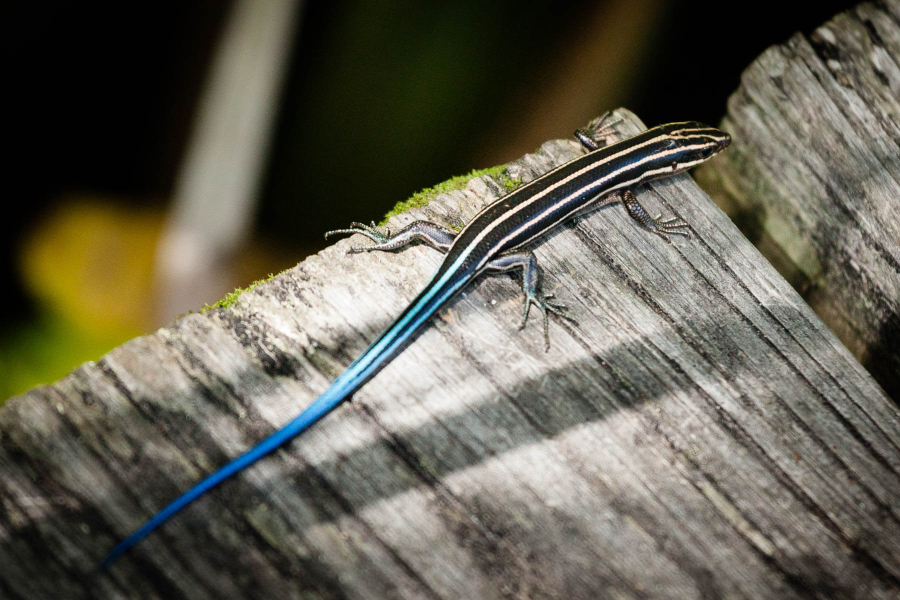Born to stand out

If you’ve ever been out on a trail and noticed a flash of blue across the forest floor, you may have been looking at a skink. The five-lined skink (Plestiodon fasciatus) is known for the characteristic stripes that run along the length of its body, but it’s the tail that really stands out—in young skinks, it’s an eye-catching electric blue.
While it’s beautiful, the bright blue tail isn’t just for show. It also helps the skink avoid being eaten. Like many lizards, the five-lined skink is able to easily detach its tail, which continues to twitch and distract predators while the skink runs away to hide. Skinks are susceptible to predation from a variety of birds, snakes, and many small mammals, including domestic cats, so defense mechanisms such as this are crucial to its survival. Fortunately for the skink, its tail will eventually regrow.
Five-lined skinks tend to lighten in color as they age. They lose the bright blue on their tails and may shift from black or brown to an olive or tan color. Males may even see the classic five stripes fade away, but they do get an orange coloring on their snouts that develops during mating season.
Though skinks can be easily identified by their stripes and bright tails, it can be difficult to know what species you’re seeing. That’s because five-lined skinks look very similar to their cousin, the broad-headed skink, and must be examined up close to determine the difference. Broad-headed skinks have an enlarged row of scales under their tails and five labial scales along their upper lip (between their nose and eye), while five-lined skinks have only four labial scales. If you ever find yourself close up enough to see these details, be careful, as skinks do bite (though rarely hard enough to break the skin).
Interested in learning more about Chesapeake wildlife? Check out our Field Guide for information on hundreds of local species.

Comments
There are no comments.
Thank you!
Your comment has been received. Before it can be published, the comment will be reviewed by our team to ensure it adheres with our rules of engagement.
Back to recent stories